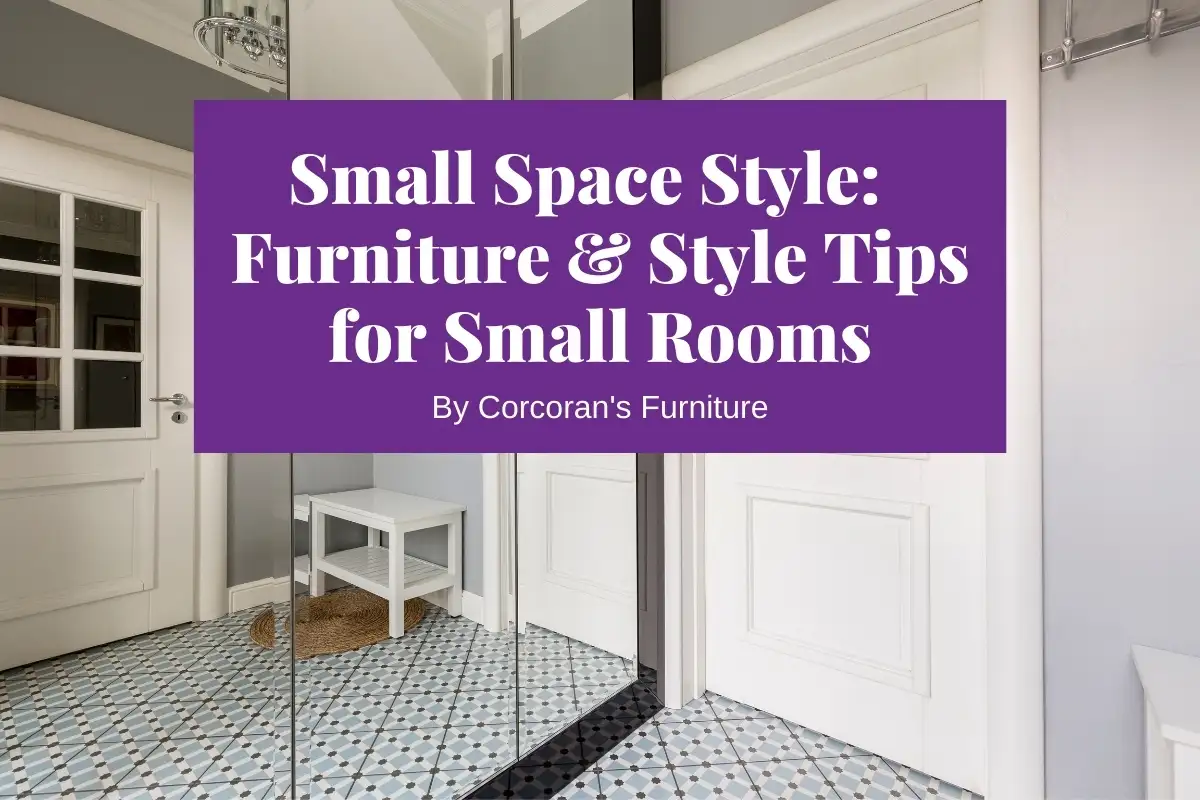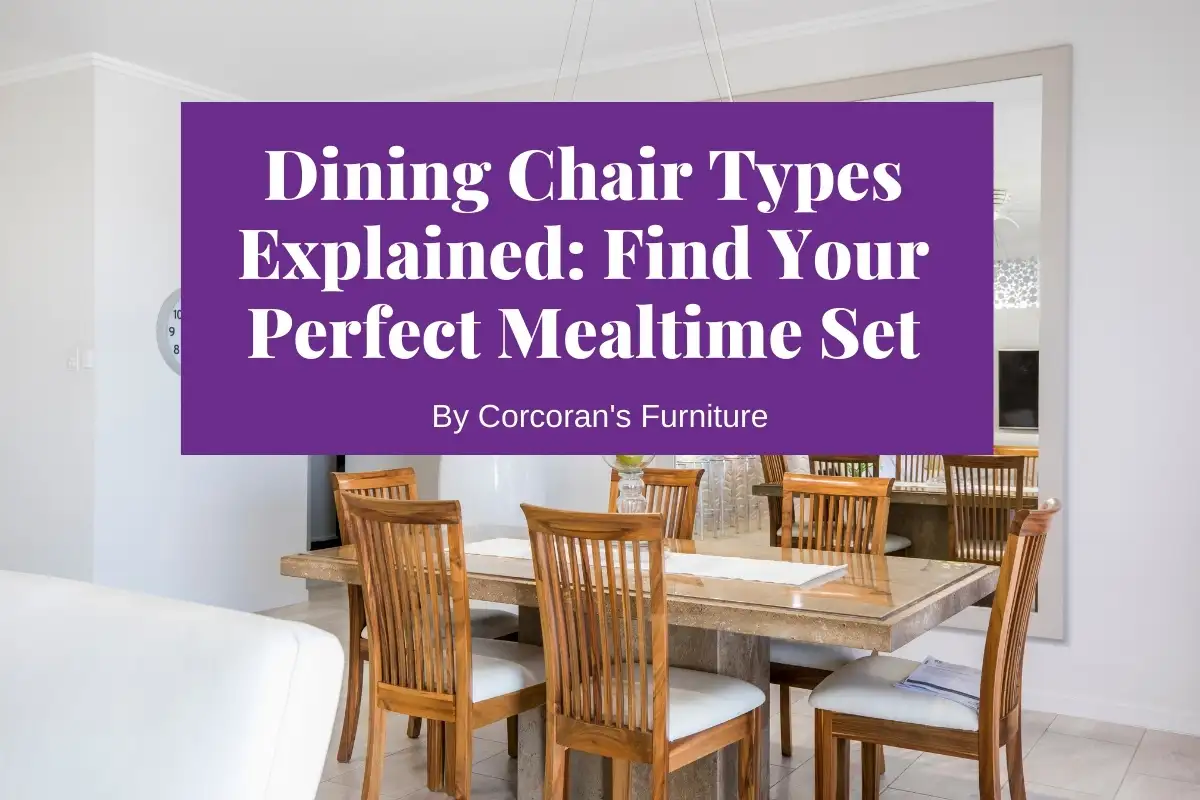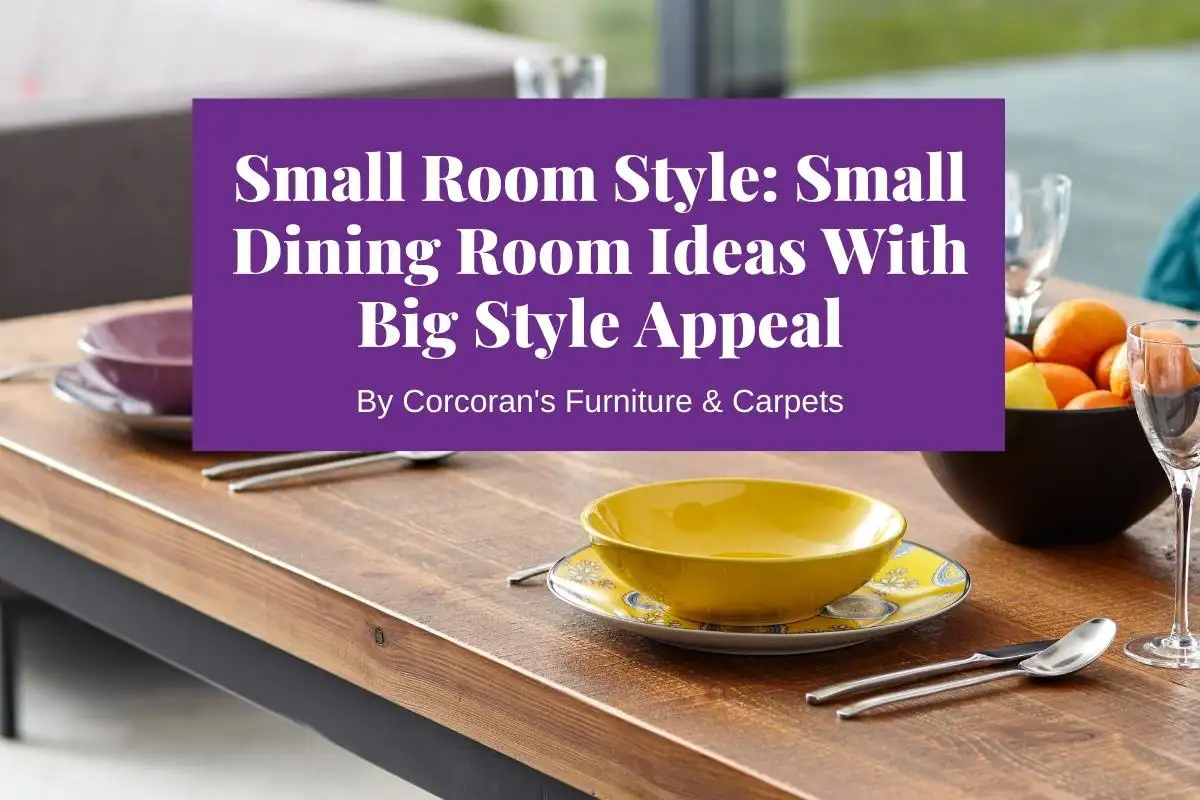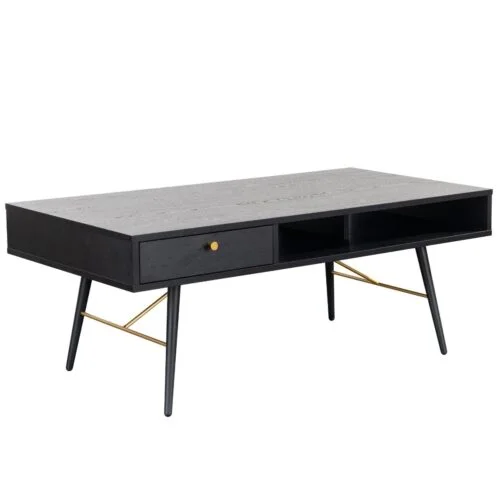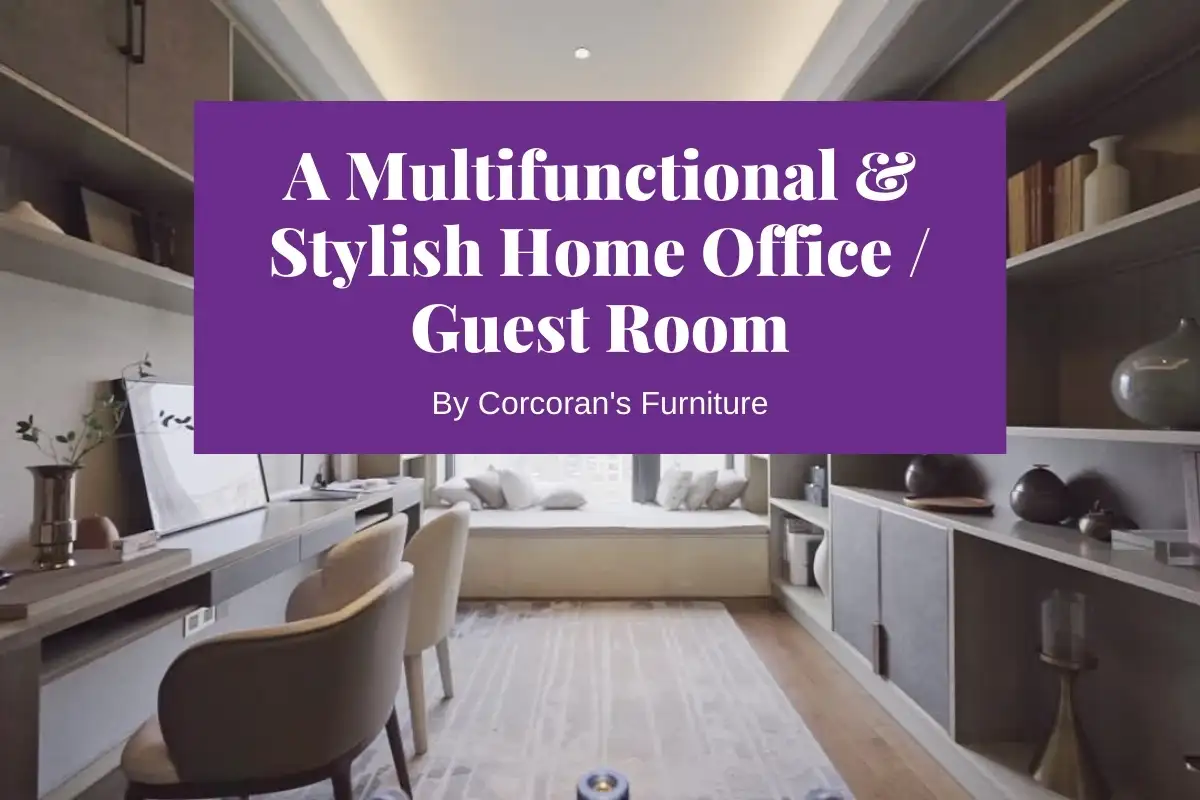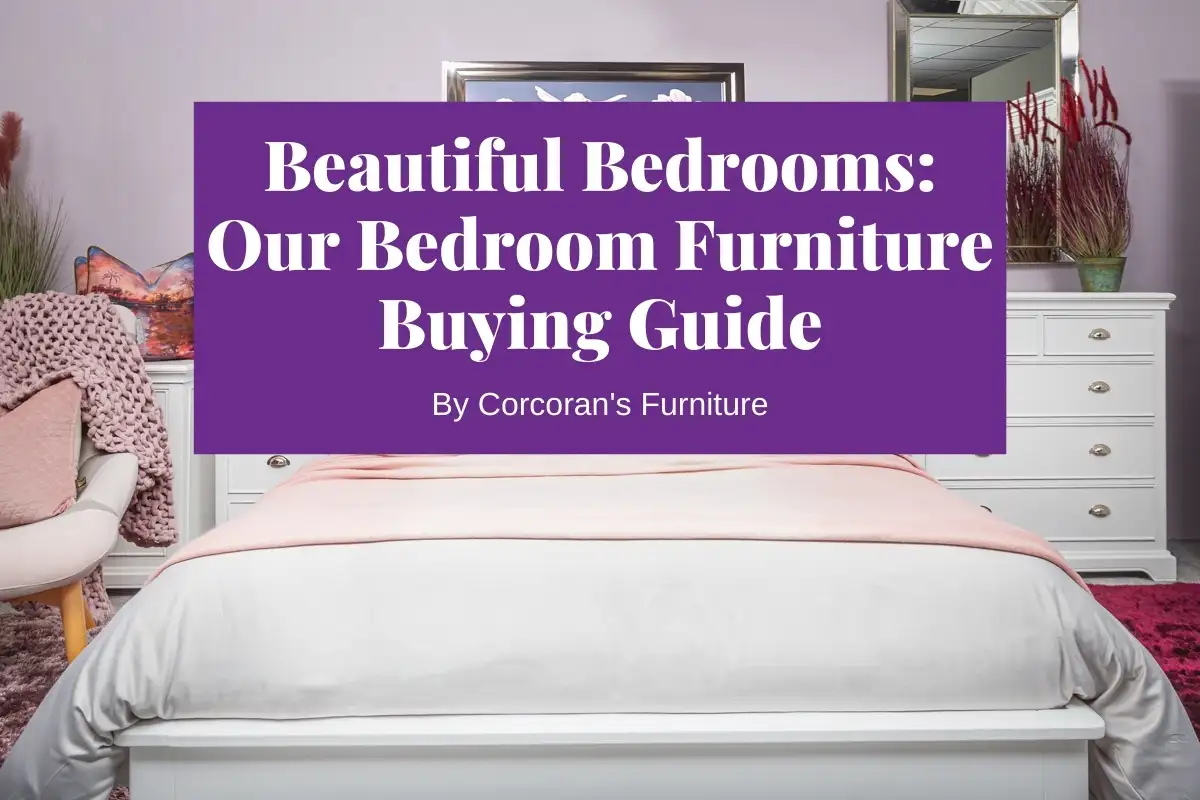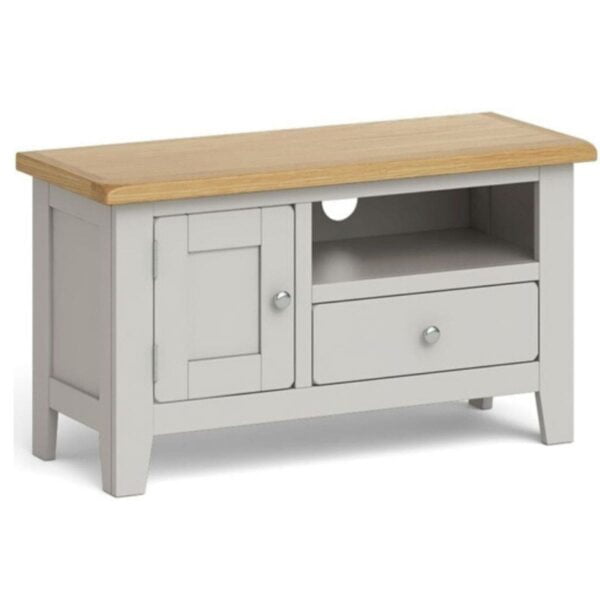Buying Living Room Furniture Made Simple with Our Guide
Whether it’s for visitors or just for your own personal comfort, buying living room furniture to create an inviting sitting room space is one of the best things you can do for your home. We’ve written a guide all about choosing the perfect sofa (see our Sofa Buying Guide here!), but there’s more to a comfortable living space than just the cushiest couch.
That’s why we have a new guide for all of your living room furniture pieces, and advice for creating your most welcoming space. Read on!
It’s all about timing
Most of us aren’t kitting out a room with all new furniture at once. Your sofa might be getting lumpy and stained while your coffee table is still in great shape. You might buy a new television that needs a new TV stand, but that doesn’t mean you’re suddenly going to rush out and buy a new bookshelf, lamp table, and display cabinet to go with it.
If you’re planning to revamp your living room in the future but you need a new piece now, consider a cheap and cheerful pick if you’re saving up for a coordinated overall furniture look. If you’re not into matchy-matchy but you still want complementary interiors, look at a neutral piece that will suit a variety of decorating styles.
Of course, if eclectic appeal is your thing, go wild! You’ll make it work.
Room-to-room style
Open concept homes have steadily increased in popularity over recent years, even here in Ireland where open spaces can be more difficult to heat on chilly winter days. If your house is open-plan, with the kitchen and living room part of one big, welcoming space, you’ll want your decorating aesthetic to flow between them as well. Incorporating principles of feng shui can enhance the harmony and balance in your living room, ensuring that your open-plan space feels both cohesive and inviting. For more tips on optimising your living room’s energy flow, check out this article on living room feng shui.
Often, furniture ranges include both living and dining pieces, so you can choose a matching dining table and coffee table or sideboard and storage cabinet and create a connected space through the pieces you choose. If you’re choosing furniture á la carte, pick dining and living room pieces from the same style (such as industrial, transitional, etc.) to ensure they fit well together.

Charlie Dining table, chairs, and bookcase
General living room styling tips
We’ll talk about specific types of furniture in a minute, but before we do, here are a few general styling tips to keep in mind when choosing your new living room pieces:
- Take measurements to ensure your furniture fits in your space. If you’re bringing in all new pieces, draw up a floor plan to help you envision where they’ll be positioned.
- Colour, either in your furniture in itself or your choices for walls, flooring, and accessories, can change the vibe of your space. Neutrals complement everything, while pops of colour bring bold detail to your room.
- For a small space, light woods, whites, glass, and mirrors can help make a room appear bigger, while dark woods and metal offer dramatic appeal that’s ideal for larger living rooms.
- Some houses have two sitting rooms, with one being more formal than the other. If you have a ‘company only’ room in addition to your main living room, think about the vibe you want your furnishings to create for each.
- If you have children or there are kids in your life, chances are they’ll be spending a good bit of time in your living room. Obviously, it makes sense to keep this in mind before outfitting a space that’s full of glass and sharp corners.
- Many of us are working or have worked from home for the first time recently. While we’re not covering office furniture in this guide, you can incorporate a desk into your space or find a multifunctional piece so you can get your work done during the day and then relax in the same space in the evening.
Start with sofas
The sofa is the centrepiece of your living space, so build your room around it. Whether you want it to be a standout statement-maker or to blend effortlessly into the overall look, use your sofa to determine the rest of the furniture you need (and use our Sofa Buying Guide to find your perfect pick!).
Sofas also tend to take up a lot of space, so consider your sofa—either the one you already have or one you might be buying—before you load up on end tables that won’t fit once you add the massive sectional of your dreams.
Add other seating
Once you have your star sofa or sofas, you may want a few more seats to accommodate guests or a big family. Armchairs offer extra comfiness, while harder accent chairs can bring textural interest to your space.
You can go for a chair that matches your main sofa, or change it up and add a pop of colour or something totally different for an exciting contrast. However, even if you’re going for a mismatched look, try to match the height of your accent chairs to the height of your sofa to keep everyone around the same eye level.
You might also choose to add a few footstools or ottomans to the room for relaxed seating and decorative pops of colour. Some even offer extra storage for multifunctional appeal.
PGJyPjxicj48YnI+
Choosing consoles
A console table is often the first thing visitors will see when they enter your home, as they are frequently located in the hall or foyer. Console tables can be a great way of introducing people to the design of your home. They can also provide storage for keys, mail, or anything else you may need to pick up or drop off as you’re coming in the door.

A console table can also serve as a side table for living room seating, or look great set up against the back of a sofa that’s positioned away from the wall. It can also act as a room divider for an open plan space.
Centring on coffee tables
There’s nothing nicer than sitting down with a cup of tea or coffee and relaxing on the sofa in your living room. Naturally, you need somewhere to set it down (or to hold a tray of biscuits), so of course that’s where a coffee table comes in.
A coffee table acts as the anchor for your living room seating, with a low table height that’s perfect for reaching from your sofa or armchair. It’s the perfect place for family and guests to gather around and share snacks and good conversation.
Choose a coffee table that is the same height as your sofa cushions, or a few centimeters lower. Lengthwise, a rectangular coffee table should ideally be about two-thirds the length of your sofa so it feels proportional to the space.
Speaking of proportions, a coffee table can balance the look of your room by contrasting with your sofa. If your couch is dense with a sofa skirt or chunky legs, choose a more delicate coffee table. Whereas if your sofa has tall legs and clean lines, a sturdier coffee table with heavy wood or stone details can add imposing style to your space.
Finally, if you know your coffee table will become a magnet for clutter, there are plenty of options with built-in drawers and storage to keep things tidy.
End tables on the edge
Maybe your room is too big for a single coffee table to serve all of your seating, or alternately maybe your room is too small to have a large coffee table taking up space. Either way, that’s where end and side tables come in.
A lamp table is ideal to sit next to your sofa and place a lamp on, providing a spotlight for your evening reading. It can also keep that teacup or TV remote close at hand. There are endless style options, from dramatic pieces that fit your decor ideals to minimalist, functional bits that simply act as a stand for whatever you place on it.
If you’re short on space or have frequent visitors, nested tables are a chic and functional addition to your living room. In a set of two or three, these matching tables tuck away into each other for space-saving style and practicality.
PGJyPjxicj48YnI+
Tables for TVs
The television is the focal point of many living rooms. Most likely, your sofas and seating are positioned to face the screen, so you’ll want a sturdy base to display it and give you a good view.
TV units come in a variety of styles from simple, compact stands to elaborate entertainment displays. You’re sure to find one that will fit your space and style, so some things to consider are whether you need it to have extra storage space, whether your TV will sit atop it or hang on the wall above, and whether you want additional display space for other items.
When choosing a TV unit, pick one that keeps the screen at a comfortable viewing height from any of your seating. If the television is a flat-screen with a stand, go for a unit that’s a little wider to prevent the TV from tipping if it gets bumped.
If you want to save on space, a corner stand keeps the television out of the way rather than central, or you can opt for a cabinet with doors that hides the TV away when not in use.
Stylish storage
There are an endless amount of things you might want to store in your living room. Books, games, photos, blankets, and more—some things you’ll want on display while others you’ll prefer tucked away when not in use. That’s why furniture with storage is one of the most important aspects of your living room.
While most of the furniture you buy for your living room has the potential for built-in storage, from coffee tables with drawers to lift-top ottomans, you can find beautiful pieces that are specifically designed to store all your trinkets and treasures.
If you don’t want the storage to take away from its contents, there are lovely, minimalist options to let your belongings shine. A backless shelving unit is a great pick for maximising space and showing off your belongings.
However, we also believe that a good display cabinet can be just as beautifully decorative as your collections. Gorgeous colours and surprising shapes can make your storage unit as much of a work of art as the items you keep in it.
PGJyPjxicj48YnI+
Whether you know exactly what you’re looking for to kit out your living room or you’re not sure where to start, Corcoran’s can help! Get in touch today and let our expert team assist you in finding the perfect coffee tables and console tables, TV stands and footstools, storage units and stoves, and more!



